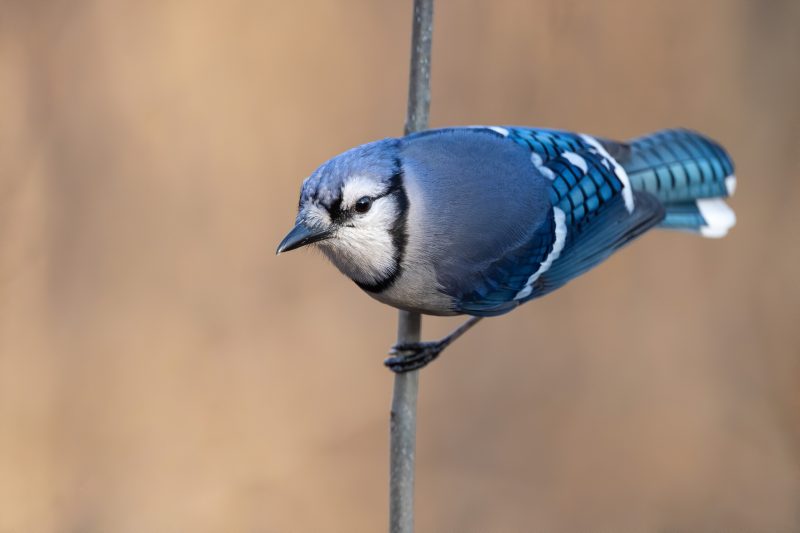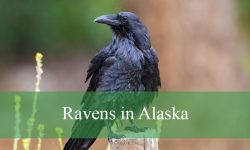Early morning in Ohio — the air crisp, the trees still half asleep. Suddenly, a sharp cry cuts through the stillness: jay! jay! jay! A flash of cobalt blue streaks through the maples, landing gracefully on a branch. Its crest rises, eyes alert, as if surveying its domain. Few birds capture attention like the blue jays in Ohio — loud, beautiful, intelligent, and endlessly misunderstood.
Known scientifically as Cyanocitta cristata, these striking songbirds are both adored and underestimated. Many think of them as noisy backyard bullies, but their social lives, intelligence, and role in shaping Ohio’s forests reveal something far more remarkable.
In this in-depth article, we’ll explore the surprising truth about blue jays in Ohio — their habits, communication, migration mysteries, and the secret ways they sustain the very forests they call home.
Meet Ohio’s Blue Jay

A Bird of Color and Character
The blue jay is one of Ohio’s most easily recognized birds — a medium-sized songbird with bright blue feathers, a black necklace-like collar, and a tall crest that changes position depending on mood. Adults typically measure 9–12 inches long with wingspans around 13–17 inches.
Despite appearances, blue jays are not truly blue. Their feathers contain no blue pigment; instead, light scattering through feather cells creates the illusion of blue — a natural optical trick called structural coloration.
From suburban backyards in Columbus to the oak forests of Hocking Hills, blue jays in Ohio are as much a part of the landscape as the rustle of leaves or the flash of cardinals in winter.
Family Ties and the Jay’s Range
Blue jays belong to the crow family, Corvidae — making them close relatives of ravens, magpies, and crows. Like their kin, they’re highly intelligent, capable of problem-solving and even tool use.
Their range covers the entire state of Ohio, from the Lake Erie shoreline to the rolling Appalachian foothills in the south. They thrive in forests, parks, and neighborhoods, wherever trees — especially oaks — provide food and nesting sites.
Their adaptability has allowed blue jays in Ohio to remain year-round residents, a constant flash of color against snow or spring bloom alike.
Behavior and Intelligence
The Social Genius of the Forest
Blue jays are among the most intelligent birds in North America. They recognize individuals, use complex vocal signals, and remember food sources for months.
Their social systems are sophisticated. Jays often form small family groups or loose flocks that cooperate to warn each other of predators. Their alarm calls can even deceive — a jay might mimic a hawk’s cry to scare smaller birds away from a feeder, a trick that shows both cunning and creativity.
Researchers have observed blue jays in Ohio planning ahead, hiding food, and adjusting strategies if they think another bird is watching. That level of insight hints at self-awareness — a rare trait among animals.
The Voice of the Woods
Blue jays are noisy for a reason. Their repertoire includes over 20 distinct sounds: bell-like notes, clicks, whistles, and mimicry of other species.
Their loud “jay jay” call acts as an alarm or territorial signal, while softer calls convey comfort or curiosity. They can imitate hawks, cats, and even human-made noises like creaking gates or phones.
This versatility makes them the communicators of the forest — information brokers who help other wildlife stay alert to danger. It’s no exaggeration to say blue jays in Ohio are the woodland’s sentinels.
Appearance and Identification
A Closer Look at Color
Blue jays’ plumage blends several shades: sky blue on top, white below, and black barring on wings and tail. Their crest rises during excitement or aggression and flattens when calm.
Both sexes look alike, though males are slightly larger. Their vivid color stands out against Ohio’s changing seasons — striking in snow, glowing against autumn leaves, and vibrant in summer light.
Even among Ohio’s diverse birdlife, the blue jay remains one of the most visually captivating species.
Seasonal Adaptations
Though their appearance stays consistent year-round, blue jays in Ohio subtly adapt behaviorally to the seasons. In summer, they defend territories fiercely and stay near nests. By fall, they become more social, joining mixed foraging flocks that roam forests and fields.
In winter, they frequent backyard feeders, caching acorns and seeds in secret locations to retrieve later — a behavior that directly influences forest regeneration.
Diet: The Forest Forager
What Blue Jays Eat
Blue jays are omnivorous opportunists. Their diet includes acorns, seeds, nuts, insects, berries, small reptiles, and occasionally bird eggs.
In Ohio’s oak-rich forests, acorns form a large portion of their diet. Jays carry them in throat pouches — sometimes flying miles before burying them for later consumption. Many of these cached acorns go uneaten, sprouting into new oak trees come spring.
Through this simple habit, blue jays in Ohio act as seed planters, shaping entire woodlands over generations.
Caching: Nature’s Reforestation Secret
Each blue jay can hide thousands of acorns each fall. Studies show they prefer fertile soil and partial shade — exactly the conditions young oaks need to thrive.
This unintentional planting has helped restore forests after natural disturbances or human clearing. In many regions, the spread of oaks after the Ice Age is partly credited to ancient jays performing the same behavior.
In other words, every jay is both gardener and engineer — cultivating Ohio’s forests one acorn at a time.
Nesting and Reproduction
Building the Perfect Nest
In early spring, blue jays in Ohio begin selecting nest sites, usually 10–25 feet above ground in sturdy trees like maples or pines.
Both partners build the nest together — a deep, cup-shaped structure woven from twigs, grass, bark strips, and sometimes bits of paper or string. Their teamwork is impressive: males bring materials while females shape and line the nest.
Nest construction takes about a week, resulting in one of the sturdiest structures among songbirds.
Raising the Family
Females lay 3–6 eggs, pale greenish-blue with brown speckles. She incubates for 16–18 days while the male supplies food.
Once hatched, the chicks remain in the nest for about three weeks. Both parents feed them insects, seeds, and berries, defending fiercely against predators — even hawks or snakes.
By midsummer, fledglings begin exploring nearby branches, learning calls, and practicing flight. Family groups often stay together through early fall before dispersing.
Migration and Mystery
Do Blue Jays Migrate?
One of the great mysteries of blue jays in Ohio is their migration pattern — or lack thereof. Some individuals migrate south in winter, while others stay year-round. Even within the same population, behavior varies dramatically.
Scientists believe migration depends on food availability, age, and local conditions. Young birds may travel farther, while adults with reliable food stores remain.
Flocks of migrating jays have been recorded along Lake Erie’s southern shores in fall — their blue wings flashing against golden foliage. Yet many never leave Ohio at all, adapting seamlessly to winter’s cold.
Navigation and Memory
Blue jays navigate using visual landmarks and possibly the Earth’s magnetic field. They possess incredible spatial memory, recalling the locations of hundreds of hidden food caches months after burying them.
This memory also helps them navigate familiar territories year after year — revisiting the same nesting sites or feeding areas with precision that rivals GPS.
It’s intelligence with purpose, refined by evolution in the unpredictable climates of the Midwest.
Role in Ohio’s Ecosystems
The Architects of the Forest
Few animals have shaped Ohio’s natural landscape as profoundly as the blue jay. By dispersing acorns, they promote oak and hickory growth, ensuring food and shelter for countless other species.
Their calls alert wildlife to predators like hawks or snakes, increasing community survival rates. Even their habit of scavenging prevents waste buildup in the ecosystem.
In short, blue jays in Ohio are silent architects — builders of balance in forests, fields, and backyards alike.
Predator and Prey
Despite their intelligence and agility, blue jays face threats from hawks, owls, raccoons, and domestic cats. Their vigilance and alarm calls are the first defense — often saving entire bird communities from surprise attacks.
Yet they also play predator themselves, consuming insects and small animals, keeping populations stable. Their place in the food web is dynamic — both hunter and hunted, essential to ecological equilibrium.
The Personality of a Blue Jay
Courage and Curiosity
Blue jays are fearless. They confront predators, mob hawks, and chase squirrels from feeders twice their size. This courage is not aggression but community defense — a protective instinct benefiting their flock and neighbors alike.
Their curiosity extends beyond defense. Blue jays in Ohio investigate new objects, mimic sounds, and even interact with human environments, testing their surroundings like scientists of the sky.
Such behavior reveals not only intelligence but also a spark of individuality — each jay with its quirks and boldness.
The Symbolism of Blue Jays
Throughout American folklore, the blue jay symbolizes communication, clarity, and courage. Native tribes saw them as truth-tellers, representing honesty and curiosity.
In modern culture, they embody adaptability — thriving in both wild forests and urban suburbs. Their presence reminds Ohioans of resilience: no matter how landscapes change, nature finds a way to thrive.
Threats and Conservation
Human Impacts
While still common, blue jays in Ohio face modern challenges — habitat loss, pesticide exposure, and window collisions. Urbanization reduces nesting areas and native food sources.
However, they adapt better than many birds. Backyard feeders, native gardens, and reforested parks have become lifelines, offering food and shelter in changing environments.
Their resilience is remarkable, but ongoing conservation ensures their calls continue to echo across Ohio skies for generations.
How to Help Blue Jays
Homeowners can support blue jay populations by:
-
Planting native trees like oaks, beeches, and maples
-
Providing peanuts, sunflower seeds, and suet in feeders
-
Offering shallow birdbaths year-round
-
Avoiding pesticides that kill insects and contaminate food chains
-
Installing nesting platforms in quiet, shaded areas
Simple actions restore balance, allowing these brilliant birds to flourish even amid suburban sprawl.
Surprising and Little-Known Facts About Blue Jays in Ohio
-
Blue jays can mimic hawks, crows, and even cats to manipulate other birds.
-
Their blue color is a trick of light — remove light, and feathers appear brown.
-
They can carry five acorns at once in their throat pouch.
-
Blue jays form lifelong pair bonds with strong family loyalty.
-
They recognize individual humans and can remember faces.
-
Jays practice “anting,” rubbing ants on their feathers to remove parasites.
-
A group of jays is called a band or a party.
-
They use specific calls for hawks, owls, and ground predators.
-
Blue jays are among the few songbirds that cache food year-round.
-
They may help spread oak forests hundreds of miles beyond their nesting sites.
FAQs About Blue Jays in Ohio
Are blue jays native to Ohio?
Yes. Blue jays in Ohio are native residents found statewide year-round.
What do blue jays eat the most?
Primarily acorns, nuts, insects, and berries — plus occasional small animals.
Do blue jays migrate from Ohio?
Some migrate south in winter, but many remain due to abundant food sources.
Are blue jays aggressive?
They can be defensive, especially near nests, but their behavior protects their families and communities.
Do blue jays help forests?
Absolutely. By burying acorns that later sprout, they naturally reforest landscapes.
How long do blue jays live?
In the wild, typically 7 years, though some live over a decade.
Are blue jays endangered?
No. Their population in Ohio remains stable thanks to adaptability and available habitats.
Can blue jays talk like parrots?
They can mimic sounds and voices, though not with the same precision as parrots.
Do blue jays mate for life?
Often yes. Pairs remain bonded across multiple breeding seasons.
What’s the best way to attract blue jays?
Offer peanuts (in or out of shell), suet, and sunflower seeds in open feeders near trees.
Final Thoughts
The blue jays of Ohio are far more than backyard chatterboxes — they’re forest builders, problem solvers, and messengers of nature’s intelligence. Their vivid color, clever minds, and deep social bonds reflect the complexity of the ecosystems they inhabit.
They are the voice of Ohio’s woodlands — alerting, planting, protecting, and surviving through every season. Watching a blue jay glide through an autumn canopy or call from a snowy branch is witnessing resilience itself.
The truth about blue jays in Ohio is simple: they are not just birds but partners of the forest — storytellers with wings, carrying acorns, memories, and the spirit of wild Ohio wherever they go.






